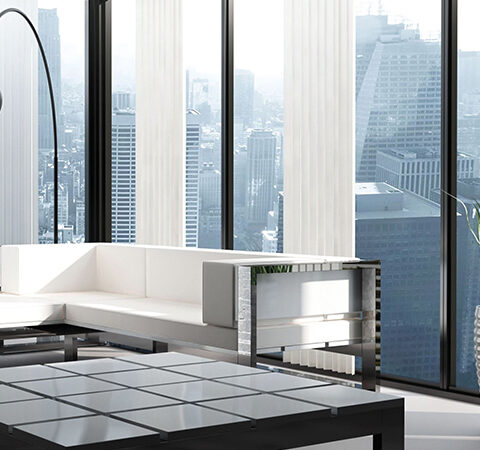The Architectural Design Process in Perth: Insights from a Commercial Architect

Introduction to Architectural Design
Understanding the basics of architectural design is essential, especially in the realm of commercial architecture. This discipline is a blend of creativity and practicality, creating structures that are both visually appealing and functional. The intricacies of design in commercial settings are manifold, often requiring a commercial architect in Perth to balance aesthetic appeal with the practical needs of a business.
- Focus on Functionality and Aesthetics: Key in commercial architecture is blending visual appeal with practical usability.
- Sustainability and Innovation: Modern commercial architecture also places a strong emphasis on sustainability and innovative design.
The Role of a Commercial Architect in Perth
A commercial architect in Perth plays a vital role in the city’s development, blending design skills with a deep understanding of local building codes and project management.
- Essential Skills and Knowledge: Proficiency in design, regulatory compliance, and effective client and contractor communication are crucial.
- Project Lifecycle Management: Managing the entire project lifecycle, from conceptualisation to completion, is a key responsibility.
Initial Consultation and Briefing
The initial consultation is pivotal in shaping the project. It involves understanding the client’s vision, objectives, and specific requirements.
- Gathering Project Information: Collecting comprehensive details about the project’s aims and limitations is essential.
- Setting Client Expectations: Aligning the architect’s approach with the client’s vision is critical.
Site Analysis and Feasibility
Site analysis is crucial in determining a site’s potential and constraints. This step informs the architectural design, ensuring optimal use of space.
- Understanding Site Characteristics: Includes analysing topography, climate, and existing structures.
- Conducting a Feasibility Study: Assesses the viability of the client’s vision in relation to the site.
Concept Development
The transition from vision to concept involves merging creativity with practicality. This phase is where initial design ideas start taking shape.
- Exploration of Design Options: Involves considering various design possibilities and aesthetic choices.
- Client Collaboration: Client input is essential to refine and direct the evolving design.
Preliminary Design and Modelling
Preliminary designs are vital for visualising the project. This stage is crucial for incorporating client feedback and refining designs.
- Use of Visual Tools: Sketches and digital models are employed to present initial ideas.
- Importance of Client Feedback: Essential for ensuring the design meets the client’s expectations and needs.
Detailed Design and Documentation
This stage involves the creation of detailed plans and documentation, focusing on technical precision and compliance with legal standards.
- Creating Technical Specifications: Includes detailed drawings and material specifications.
- Regulatory Compliance: Ensuring the design adheres to all legal and safety standards.
Selecting Construction Materials
Choosing the right materials is crucial for the success of the project. Architects must balance aesthetic appeal with functionality and sustainability.
- Material Selection: Involves choosing sustainable, durable, and aesthetically pleasing materials.
- Environmental Considerations: Using materials that are environmentally responsible and suitable for the local climate.
Budgeting and Cost Estimation
Architects must develop cost-effective solutions that align with the client’s budget, without compromising design quality.
- Cost Management: Involves accurate estimation and efficient allocation of resources.
- Value Engineering: Finding ways to reduce costs while maintaining design integrity.
Obtaining Necessary Approvals
Navigating local regulations and obtaining necessary approvals is a complex but essential task. It involves liaising with authorities and ensuring compliance.
- Regulatory Knowledge: Understanding and adhering to local building codes and regulations.
- Approval Process: Managing the process of obtaining necessary permits and approvals.
Construction Phase
During construction, the architect’s role is to ensure that the project’s progression aligns with the design plans.
- Site Supervision: Regular monitoring of the construction process.
- Quality Control: Ensuring the construction meets the specified standards.
Interior Design Integration
Integrating interior design is key to creating functional and aesthetically pleasing spaces. This involves collaboration between architects and interior designers.
- Functional Aesthetics: Balancing the aesthetic aspects with functional requirements.
- Collaborative Approach: Working with interior designers to ensure cohesive design throughout.
Project Completion and Handover
The final phase involves ensuring all aspects of the project are completed to satisfaction, leading to a successful handover.
- Final Inspections: Ensuring all aspects of the project meet the required standards.
- Client Satisfaction: Ensuring the finished project aligns with the client’s expectations.
Maintaining the Architectural Integrity
Post-completion, it is important to maintain the architectural integrity of the building. This includes ongoing maintenance and adaptations.
- Long-term Considerations: Planning for the building’s long-term upkeep and functionality.
- Post-completion Services: Providing services and support after the project’s completion.
Conclusion and Future Trends
In conclusion, the architectural design process in commercial settings is a complex but rewarding journey. It requires a harmonious blend of creativity, practicality, and technical knowledge. The future of commercial architecture in Perth looks promising, with a focus on sustainable practices, innovative design, and responsive urban development. As the city evolves, the role of a commercial architect in Perth will continue to be pivotal in shaping its commercial landscape.
For your commercial architecture needs in Perth, consider reaching out to Ryan Tsen Architects today for expert guidance and exceptional service.
